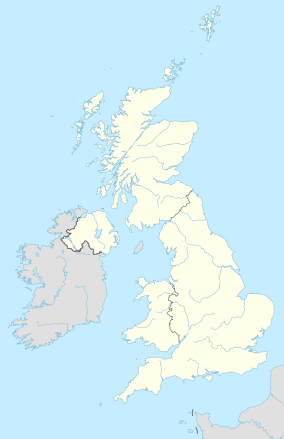Landscape of Ashdown Forest facts for kids
Quick facts for kids Ashdown Forest |
|
|---|---|

Ashdown Forest near Greenwood Gate Clump
|
|
| Location | East Sussex, England |
| Governing body | The Conservators of Ashdown Forest |
Ashdown Forest is a large, open area of heathland located about 30 miles south-east of London, England. It used to be a royal hunting ground. This forest is very important for nature. It has been named a Site of Special Scientific Interest in the UK. The European Union also protects it as a Special Protection Area for birds and a Special Area of Conservation for its heathland. Ashdown Forest is part of Natura 2000, which connects Europe's most important wildlife areas.
The forest is found within the High Weald Area of Outstanding Natural Beauty. This area is known for its rolling hills and steep streams. It also has rocky outcrops and many ancient woods. Ashdown Forest is the largest example of open heathland in this beautiful region.
The unique look of Ashdown Forest, with its open heathland and groups of pine trees on hilltops, became famous through the Winnie the Pooh stories. A. A. Milne, who wrote the books, lived near the forest. The pictures by E. H. Shepard for the books show the forest's special charm.
Contents
How the Forest Landscape Changed
Nature's Influence: Rocks and Weather
Ashdown Forest's landscape is shaped by the rocks beneath it. Most of the ground is made of sandstone and siltstone from the Ashdown Sands. The weather here is often wetter, cooler, and windier than nearby areas. This is because the forest is higher up, from about 200 feet to over 700 feet above sea level.
These conditions create sandy, acidic soils that don't have many nutrients. These poor soils are perfect for heathland, wet valleys, and damp woodlands. Because the soil isn't good for farming, people have used the forest for hunting and getting wood or other materials.
People's Influence: Commoners and Their Animals
Even though Ashdown Forest looks wild, people have played a big part in shaping it. For hundreds of years, local people called commoners used the forest's resources. They helped keep the heathland open.
Commoners grazed many animals like cattle and pigs. These animals ate young trees and bushes, stopping them from growing too much. People also cut wood for fires and collected dead ferns for animal bedding. Sometimes, they even burned small parts of the heathland.
In the late 1200s, commoners grazed 2,000-3,000 cattle on the forest. There were also 1,000-2,000 deer. A record from 1297 shows almost 2,700 pigs were grazing there too. This shows how much human activity shaped the forest over time.
The Iron Industry's Impact
In the Tudor period (1485-1603), a large iron industry grew in the area. This industry needed huge amounts of wood to make charcoal for its furnaces. This had a big effect on Ashdown Forest's trees.
Many trees were cut down around the forest's edges in the 1500s. This was due to the new blast furnaces that needed a lot of charcoal. For example, a lot of trees were cut to feed the iron works of Ralph Hogge.
People were worried about the loss of trees. As early as 1520, people complained that "much of the King's woods were cut down... for the iron mills." They also said the forest was "digged for Irne [iron] by which man and beast be in jeopardy."
Even though some thought trees would be managed sustainably, the iron industry kept cutting down trees in Ashdown Forest until the 1600s. By 1632, there was "little great wood left." The last record of pigs feeding on acorns in the forest was in 1600. This suggests that the oak and beech woodlands were mostly gone. The iron industry declined in the 1700s, but it was too late for the ancient trees.
Forest History Over Time
Medieval Times
In medieval times, English kings and nobles used Ashdown Forest for hunting deer. Even then, it likely had large areas of open heathland. Many medieval forests in England were mostly heathland, not dense woods. For example, Sherwood Forest was mostly heathland by the late 1200s.
Unlike many other English heathlands that have disappeared, Ashdown Forest's heathland has survived. Today, its 1,500 hectares (about 3,700 acres) of heathland make it the largest and most important area of this rare habitat in south-east England. It is home to special plants and animals.
1800s and 1900s
In the early 1800s, writer William Cobbett described Ashdown Forest. He called it "the most villainously ugly spot I saw in England." He noted it was a heath with few birch trees and "black, ragged, hideous rocks."
By the early 1900s, the forest had very few trees. Only the scenic groups of Scots pine on hilltops and some woods in deep valleys remained. It was still the largest heathland in south-east England.
After World War II, fewer animals grazed on the forest. This was due to changes in society and the economy. As a result, much of the heathland started to be taken over by bushes and trees like birch and pine. Also, more cars on the roads meant more animals were hit. This made grazing even harder. The last free-roaming animals were removed in 1985.
Because of these changes, the amount of heathland in the forest has dropped a lot. In 1947, 90% of the forest was heathland. By 2007, it was only 60%.


